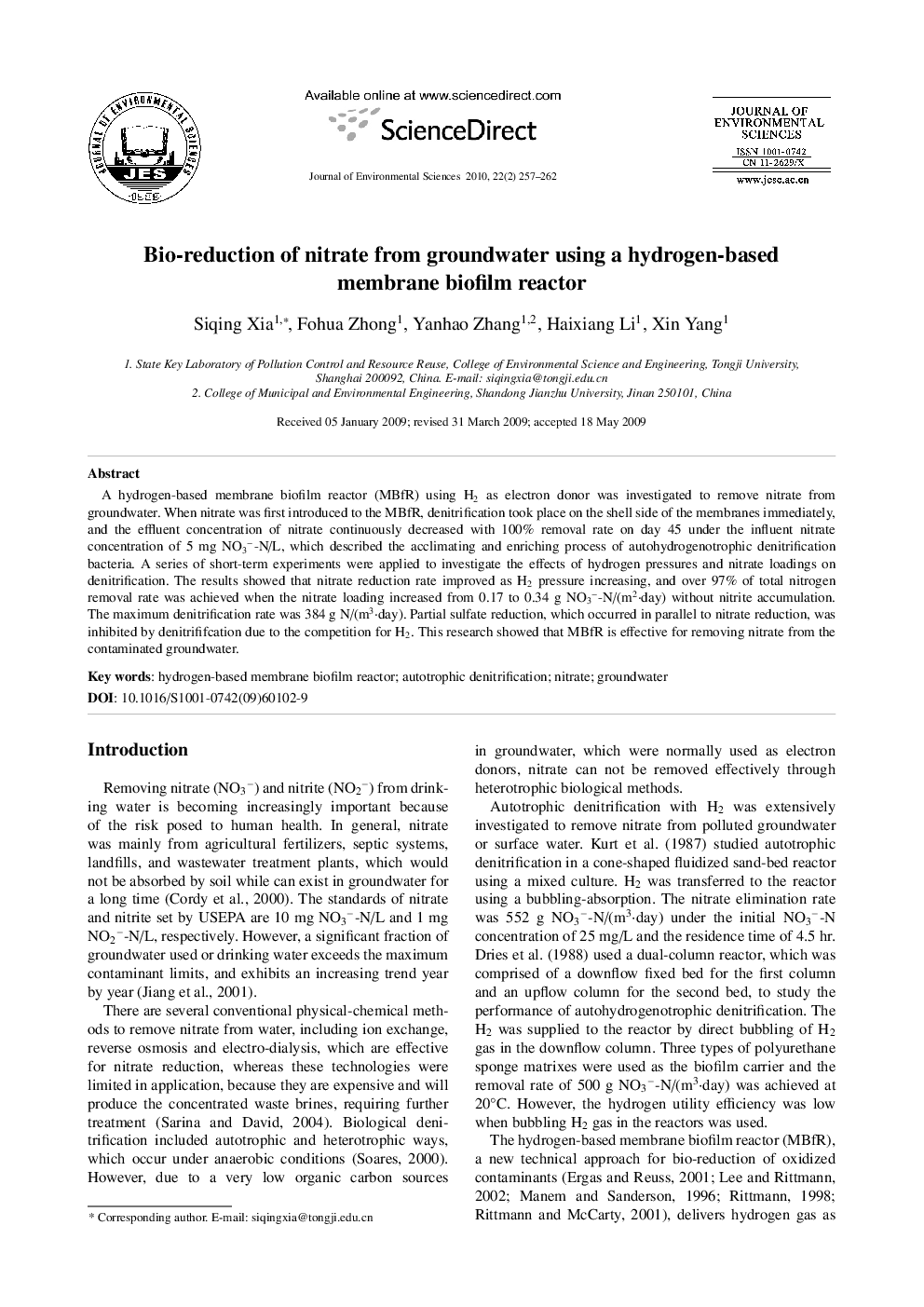| Article ID | Journal | Published Year | Pages | File Type |
|---|---|---|---|---|
| 4456056 | Journal of Environmental Sciences | 2010 | 6 Pages |
A hydrogen-based membrane biofilm reactor (MBfR) using H2 as electron donor was investigated to remove nitrate from groundwater. When nitrate was first introduced to the MBfR, denitrification took place on the shell side of the membranes immediately, and the effluent concentration of nitrate continuously decreased with 100% removal rate on day 45 under the influent nitrate concentration of 5 mg NO3−-N/L, which described the acclimating and enriching process of autohydrogenotrophic denitrification bacteria. A series of short-term experiments were applied to investigate the effects of hydrogen pressures and nitrate loadings on denitrification. The results showed that nitrate reduction rate improved as H2 pressure increasing, and over 97% of total nitrogen removal rate was achieved when the nitrate loading increased from 0.17 to 0.34 g NO3−-N/(m2·day) without nitrite accumulation. The maximum denitrification rate was 384 g N/(m3·day). Partial sulfate reduction, which occurred in parallel to nitrate reduction, was inhibited by denitrififcation due to the competition for H2. This research showed that MBfR is effective for removing nitrate from the contaminated groundwater.
